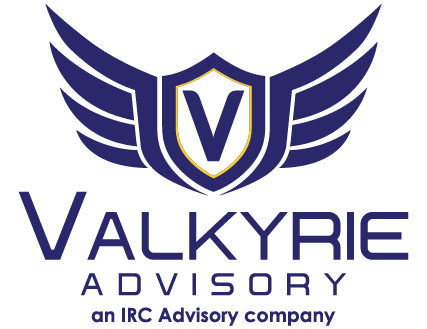Executive Summary:
Currently there is financial constipation in the US – preventing billions of dollars in disaster/pandemic funds from being gathered, secured, controlled and conveyed to those affected. There are no pervasive payment platform(s) in the US – accepting funds from across government, charitable organizations and foundations – to convey funds to consumers for disaster/pandemic preparation and recovery. This is especially harmful to the 32.6 million underbanked[1] US households (over 70 million people) – who are hardest hit. There is a lack[2] of secure, controlled, fully trackable platforms and access/spend tools (cards, smartphone apps). This prevents or delays delivery of billions of dollars of time-critical funds to the most vulnerable.
With natural disasters like hurricanes, physical relief (e.g. water, food, first aid) has structured consistent plans and collaboration to pre-position to respond immediately. Relief funds need to have the same pre-planning and ongoing rigor – controlled, tracked, secure – to be ready to deliver funds directly to those affected quickly.
This is even more challenging in a pandemic. Unlike natural disasters, it is not possible to have large groups of people aggregated into one condensed space to sign up and receive aid. Thus, having an electronic platform for gathering, controlling, dispersing, and spending these funds – is especially essential. For the underbanked, many of whom have hourly paid service jobs and are unemployed in a pandemic – the need for this direct, electronic, fast access financial aid – is critical to survival.
There is a need now for the financial services industry (“FinServ”) to collaborate with government and charitable organizations in financial disaster preparation, response, and rebuild – ready to activate immediately for delivery of contributed relief funds to those impacted in/after a disaster. A need to create a Payments as a Lifeline (PaaL), capability and to manage/propel it through an industry level alliance – Financial Emergency Alliance (FEA).
Financial Services in a Disaster – a multi-billion-dollar underserved payments market
The processes to get funds directly into the hands of consumers – in a secure, transparent, controlled trackable method – has barely advanced since hurricane Katrina. There are heroic responses in the first 72 hours by relief organizations to get those affected safe, dry, clothed and fed. But there is painfully little ready to deliver meaningful levels of funds to consumers – immediately and for the mid/longer term. They need fast access to these funds to fuel recovery and to a return to their regular life – restoring normalcy, building pride and enabling growth.
For the FinServ industry, this is currently an underserved “emerging market”. In 2018 there were over $90B in uninsured disasters [1] losses. In hurricane Katrina alone, there was reportedly over $2.6B in donations raised in support . These funds in the hands of consumers could be spent to purchase their own specific needs (e.g. housing, transportation, medical, etc). The pre-purchased goods (e.g. food, water) are helpful, but lack the of funding to recover and rebuild.
Financial vs Physical Needs, in Disaster Preparedness and Recovery
Mention “critical infrastructure protection” (CIP), and the conversation turns to stories of roads, bridges, power grid, water, etc. “Disaster Preparedness” and prepositioning, talk turns to food, water, first aid. Those impacted also need immediate access to funds for essential purchases – to an electronic account (Discover, MasterCard, Visa). While accessing funds is a challenge for anyone in a disaster, for the underbanked population, this challenge is almost insurmountable. This lack of access to funds exponentializes the negative impact of the event, especially to the most vulnerable, and extends recovery time – to the detriment to families and to the entire community.
Disasters Affect the Local Economy, Especially Small Businesses and Tourism
Financial disaster recovery is critical not just to consumers, but also to businesses of all sizes, especially small businesses. It’s essential to have advance plans to bring residents home, and re-open local businesses as quickly as possible to serve locals and attract essential tourism.
“Direct damage…is only a part of the economic significance of the disasters. The secondary, and potentially more severe, impact of natural disasters is on economic development in the post disaster period…the largest disasters slow regional economic growth for decades”
“There is a very close link between tourism and natural disasters…. Tourism is significantly disrupted and in most cases the industry is destroyed…Tourism is an important part of countries’ economy and in less economically developed countries…the local economy greatly relies upon the industry’s services for the livelihood of its population. The massive affect a natural disaster can have on tourism is related to the negative multiplier effect…impact of the event spreading through the economy”
In the past 20 years, there has been a range of 70 to 170 insurance designated domestic catastrophes per year, and they’re increasing. In many of these events, hundreds of affected individuals and families are left without identification, cash, credit/debit cards, access to insurance support, and other financial services (FS) necessities. This presents a number of challenges, including personal safety and security, ability to leave the disaster site, increased insurance claims costs, increased time to start on the road to financial and home or business recovery.
The uninsured losses are also often dramatically higher than insured losses, and are growing, driving an ever-increasing need for those impacted to have faster access to their own funds , plus government, charity and NGO resources.
Not only do natural disasters cause stress, but because power, communications, and financial services facilities may have also been affected, it takes considerable time and effort to even begin personal recovery efforts. This paper is to call attention to this unaddressed challenge, to drive a discussion for preparedness for financial services needs in this area so critical to citizens and small businesses- access to funds, financial transaction tools. We need to reduce the response time to get funds into impacted consumers hands from days/weeks/months – to hours/days.
Prepositioning of Critical Financial Needs for a Disaster
During fire, hurricane, and tornado seasons, disaster physical assets are pre-funded, pre-purchased and pre-staged in strategic locations to accelerate support with food, water, shelter, medical supplies, etc. Year round, in a sustained, repeated process, budgets and plans are set to assure these basic needs are funded and ready to deploy to the regions most likely to be impacted by disasters (e.g. fires in the West, hurricanes in the South East, earthquakes, floods, tornadoes, etc.).
However, except for the largest insurance companies’ catastrophe teams, there is nothing similar to assist those impacted in their financial recovery needs – and insurance teams can only help with their insurance claims funds, not to the broader base of contributions from charities, foundations, etc.
Consumers and Small Businesses: The Circle of Recovery
Consumers and small businesses need access to funds to enable them to leave the danger zone, protect their families and employees, and access key infrastructure to start the recovery of their homes and businesses. We can empower them with access to the funds and tools to secure necessities quickly, safely, with minimized fraud, and a built-in accounting/control system. By adding FinServ to disaster public private partnerships (PPP), we can leverage repurposed existing financial networks/tools – to be prepared and pre-positioned to help immediately.
Viewing an impacted person’s need for identification, communication, and financial services, can be captured in a ‘circle of recovery’.
In Katrina, a key reason those impacted refused to leave the disaster zone was that they were waiting for their benefit checks in the mail. Many had no bank accounts to cash checks and no ATM or bank cards to secure cash and the goods and services they needed to leave. In the years since Katrina, payments systems technology has advanced dramatically, but it’s use for disasters and pandemic is still minimal.
As part of a firm donating millions in pro-bono management, technology and infrastructure work – our team saw heart breaking stories. We had already helped a large global NGO to convert their system from checks to the then new technology of prepaid cards. This same pro bono help was offered to a major disaster agency, was declined, and the news covered stories of the fraud and abuse of these uncontrolled funds, including riots in the streets as those impacted had to battle fraudsters for their funds, and disaster emergency funds were spent on sex change operations and designer purses.
Future View – Financial Preparedness for Disaster – Payments as a Lifeline (PaaL)
Flash forward 14 years from Katrina to Harvey. Little progress in financial disaster preparedness, but technology has advanced dramatically, with much more secure, robust, controlled, accessible solutions via payment networks and tools. This is repurposing existing systems, to serve in disasters to provide charities and government organizations, with platforms to deliver funds to their targeted recipients (e.g. a hotel foundation to pay for housing, a childrens’ charity for uniforms and rides to school, etc.). Prepaid platforms now can provide deep data analytics (anonymized) of spend (e.g. by category, by geography, by merchant/store/brand, etc.). These platforms can also be used in partnerships with retailers seeking to support the recovery, generate sales, and block gouging. Branching from a central national not-for-profit group, different partner in the financial value chain can choose regions to participate in national and/or local/regional PPP relief efforts.
Financial Emergency Alliance (FEA) to support Payments as a Lifeline (PaaL)
“Financial Emergency Alliance” (“FEA” for now), is a not-for-profit to enable an interface of the FinServ industry into existing PPP disaster preparation, response and recovery efforts. The payments technology is accessed easily as a card or smart phone app. The focuses is on processes and best practices; exceptions to current banking rules; system interface requirements of multiple players in different local/regional/national efforts (e.g. federal/state government, regulatory agencies, NGO’s, foundations, charities, FinServ, anti-money laundering and anti-fraud agencies, insurance, etc.).
The FEA will actively professionally manage a task force of FinServ companies, interfacing with existing disaster PPPs for a nationally collaborated, local/regional/national financial disaster response. The organization will run at a low hum constantly, lead FinServ participation in disaster preparation planning and exercises, be ready to respond into a region within 24-28 hours of a disaster. The FEA is structured as a central group, with FEMA patterned regions that vary in participants (banks, processors, etc.). The FEA is currently in the demonstration project mode, developing the tools, rules, best practices, connectivity to existing PPP disaster efforts, thousands of charities and foundations, and government entities. FEA members support those seeking to disperse funds with the control/audit/accounting of these FEA member platforms. FEA drives the coordination and program management, requirements and capabilities, pre-planning, joint PPP disaster exercises, and ultimately the coordination/management of the FinServ side of disaster and pandemic response and rebuild efforts – short, middle and long term.
Views: From Financial Services, Foundations/Charities, Communities, Government
- For those in FinServ, this is a large new “emerging market” currently devastatingly underserved, with a large percent of the spend at retail sites fueling community rebuild.
- For government, donors/foundations/civic groups, this is a platform to support the dispersal of your donations to your target population – in a fully trackable, secure, controlled for spend and fraud/abuse, with automatic accounting of all spend.
- For communities and government seeking to assure a well-prepared response and recovery plan, this adds a capability for those in need to access secure direct funds to help rebuild their homes, businesses, and community – quickly/securely with full accounting.
We need to work together with an organized, collaborated central effort across banking/payments systems, government, and PPPs – to exponentialize secure, efficient consumer/SMB access to funds in rebuilding live and communities after a disaster.
Call to Action
Interest has been expressed by FinServ leaders, and Payments as a Lifeline (PaaL and FEA) has been very well received at critical Public Private Partnership disaster response events. If you are interested in joining this discussion, please contact ktrusko@ircadvisory.com


Recent Comments